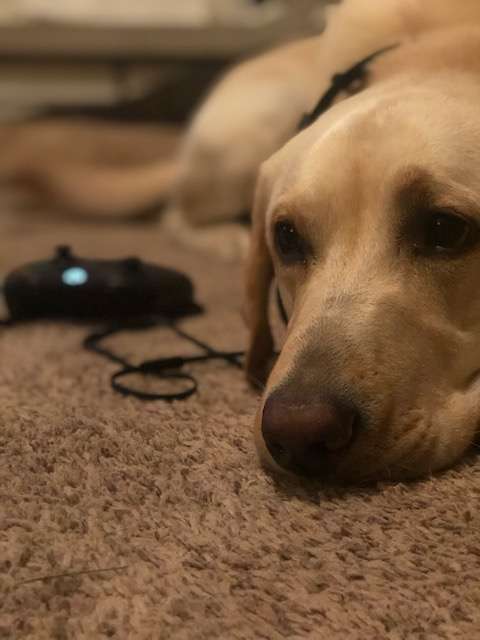How Your Dog Knows They Did It Wrong
by Jimmy Maxwell KPA-CTP

I am a video gamer, and I have recently been playing a very realistic race simulator while socially distancing at home. It’s probably the closest thing to driving a real race car that have, or ever will, experience. There are so many little things that go into race car driving, that it takes tremendous practice and training to even get a turn right. But how do I know that I nail the turn? Well, the game tells me.
It’s a sweet feeling when I am well into a race and I hit a turn just right and a prompt comes up on the screen that says, “Good Turn”. Better yet, there are those moments that I hit a turn even better and the game will tell me, “Perfect Turn”. Now I know exactly what to do going into a specific turn and the more I receive that “Good Turn” prompt the more I repeat the turn in the exact same way the next lap.
One thing that I noticed about the game is what happens when I do not perform the turn correctly; nothing. Nothing happens. It would be easy to for a red light to appear, or warning sign, or even tell me what I did wrong, but it doesn’t. So, when my turn isn’t good, or perfect, how do I know?
Do You Need To Tell the Dog “No”?
Parents will often say that if they let certain actions go unpunished in their children, it is the same as condoning that action. Many dog owners believe the same thing. Many believe that positive reinforcement training doesn’t work because it never tells the dog what they did wrong. To which I’d say, when done correctly, it doesn’t need to. The withholding of reinforcement, especially when highly valued, is enough feedback to tell any living thing that that the mark was missed. Give them another opportunity to earn the same reinforcement and see if they can hit the mark again. One of two things will happen; they will either keep trying to earn the reinforcer, or they will check out.
If They Keep Trying Unsuccessfully…
Your training plan may need some adjusting. You can learn more about that by reading a previous blog post on adjusting your training plans.
If Your Dog Seems Uninterested
If your dog checks out, it’s not likely because they are unmotivated, or need correction, but need more incentive to keep trying. Make sure that whatever you are using in your dog’s training is something that your dog wants to earn, not what you think it wants to earn. Some dogs will work hard for kibble, but other dogs need a little more motivation. Everyone has a price, and so do your dogs. Up the ante, and then try again.
When we can train without correction, and the dog sees the training as a game, it builds confidence, teaches him to problem solve, increases your bond, and makes the training fun. When there is correction, or even a threat of correction in training, it increases the stress of learning and makes it an iffy proposition for your dog.
I enjoy playing my racing game, especially since it teaches using positive reinforcement. It never yells at me and gives me the only feedback I need, which is withholding the reinforcer. Now that I think about it, there is one amount of feedback that it gives when I do it wrong: it presents an option to rewind the turn without penalty. So instead of telling me that it was wrong, it simply says, “That’s okay, try again”. If a video game can get it right, so can we.
